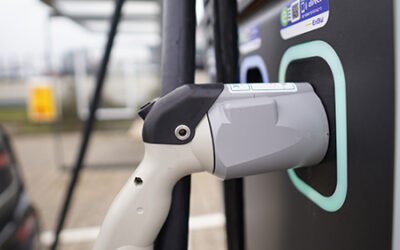- Plug&Charge is a recent innovation that can initiate charging, receive power, and handle payments directly through the charging cable, improving the experience of EV users.
- The EV owner signs up for charging services with a mobility operator and establishes a contractual relationship that will enable the owner to charge their EVs in the future.
- A dual authentication process occurs that ensures the communication between the EV and the charging station is secure and guarantees that they are authorized to exchange data.
Electric vehicle (EV) drivers currently use various payment methods for public charging, including RFID (Radio-frequency identification) cards, smartphone applications, and credit card readers. Roaming providers have simplified membership programs, allowing a single RFID card to work across different charging networks and even in other countries. However, a recent innovation, known as ‘Plug&Charge,’ promises to simplify the charging process. With this technology, EV drivers can initiate charging, receive power, and handle payments directly through the charging cable. Plug&Charge is designed to improve the overall experience for EV users by streamlining the payment process. Furthermore, it offers a flexible platform for operators to introduce new and innovative services, potentially making the transition to electric mobility more attractive.
Plug&Charge Ecosystem
The EV manufacturer looks after the security certificates for the car, including a special certificate installed in the EV. Additionally, an ISO 15118-compliant Vehicle-to-Grid (V2G) root certificate is installed in the vehicle’s communication controller. The charging station is connected to a CPO’s backend and has its separate digital certificate verified by a third-party V2G root Public Key Infrastructure (PKI). Both the EV and the charging station have the V2G root certificate installed in their respective communication controllers. After purchasing the EV, the owner can sign up for charging services with a mobility operator, establishing a contractual relationship. The use of smart chargers with advanced algorithms enhances the charging process, resulting in the most efficient use of available energy. This allows for incorporating energy storage systems, adding flexibility and reliability to the charging infrastructure. Figure 1 below illustrates the Plug&Charge ecosystem.

Figure 1: Plug&Charge Ecosystem.
Source: PTR Inc.
Certification Process and Charging Session Management with Plug&Charge
Plug&Charge technology focuses on the secure communication between the electric vehicle (EV) and the charging station. This secure interaction is facilitated by digital certificates, serving as a secure form of identification, similar to a digital passport, for both the EV and the charging infrastructure. These digital certificates adhere to the ISO 15118 standard, an internationally recognized protocol governing communication between EVs and charging stations.
When an EV is connected to a charging station, the vehicle and the station initiate a process known as the “handshake” by exchanging their respective digital certificates. Within this handshake, the charging station validates the vehicle’s certificate, and concurrently, the vehicle verifies the charging station’s certificate. This dual authentication process ensures that the communication between the two entities is not only secure but also guarantees that they are authorized to exchange data.
After the successful completion of the handshake, the charging station transmits the vehicle’s certificate to a centralized system located in the background, which is typically under the management of the charging network operator. This backend system assumes the responsibility of overseeing user accounts, billing details, and records of charging sessions. It establishes communication with the charging station to validate the ownership of the vehicle’s account, confirms the availability of charging plans, and manages the billing process.
Once the user’s account is confirmed and the charging plan is verified, the backend system dispatches an authorization message to the charging station, granting permission to commence the charging session. Throughout the session, the backend system continuously monitors the charging procedure, capturing pertinent information like energy consumption, duration, and associated costs.
Upon the conclusion of the charging session, the backend system autonomously processes the billing information and debits the user’s account accordingly. Additionally, it has the capability to forward session summaries and usage reports to users, enabling them to conveniently track their charging history and related expenses. Figure 2 below summarizes the process of Plug&Charge technology between the EV and the charging station.

Figure 2: Overview of Plug&Charge Technology.
Source: Tritium Charging
EV Charging Infrastructure Service Overview
The research presented in this article is from PTR's EV Charging Infrastructure market research. For information about this service please submit a request shown below.
Contact Sales:
Europe
+49-89-12250950
Americas
+1 408-604-0522
Japan
+81-80-7808-1378
GCC/Rest of APAC
+971-58-1602441
More about our:
EV Charging Infrastructure Market Research
Recent Insights
Sustainability Across Sectors: Highlights from GreenTech Festival 2024
Recently, I had the privilege to attend and present at the Greentech Festival, an excellent event in the realm of sustainability. This influential...
An Evolving Market: Rise of Electric Vehicles in Europe (2023)
This infographic examines the electric vehicle (EV) market in the European region. It highlights the current and forecasted EV market size of each...
Evolution of V2G: CPOs-Automotive OEMs-Utilities at the center of transition
Evolution of V2G: CPOs-Automotive OEMs-Utilities at the center of transition [ba_advanced_divider active_element="text" title="About the Whitepaper"...


